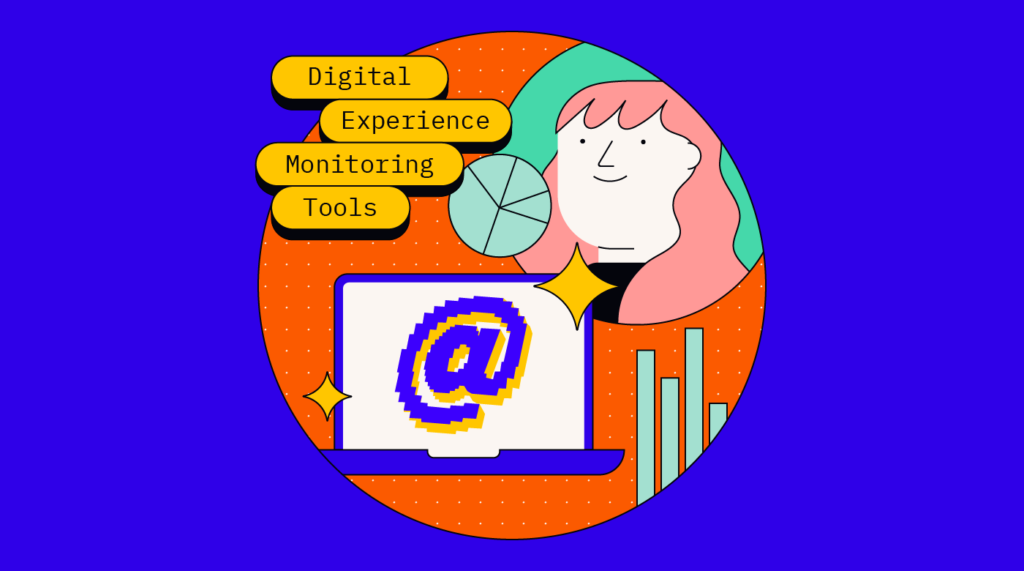Key Takeaways
- Monitoring tools offer insights into user behavior and system performance, which Digital Experience is crucial for optimizing digital experiences.
- Effective monitoring can increase customer satisfaction, enhance performance, and reduce downtime.
- Adopting a strategic approach to monitoring can future-proof businesses in a rapidly evolving digital landscape.
Introduction
In today’s digital era, providing an exceptional user experience is crucial for businesses aiming to stay ahead of their competition. Whether it’s an e-commerce website, a mobile app, or an online service platform, the success of digital interactions hinges significantly on user satisfaction and seamless performance.This is why the use of Conjointly’s Kano Model Tool, and other similar tools, are required to ensure that any changes are to the users satisfaction, helping you to appeal to them time and time again. Monitoring tools have emerged as indispensable business allies, unlocking better digital experiences by offering deep insights and understanding into user behaviors and system operations.
The Importance of Monitoring Tools
Monitoring tools are pivotal in shaping the digital experience by offering continuous oversight and actionable insights. They allow businesses to track user interactions, identify bottlenecks, and ensure systems run optimally. Through comprehensive monitoring solutions, businesses can preemptively detect issues before they escalate, improving reliability and user satisfaction.
For instance, companies offering solutions similar to those provided by eG Innovations specialize in monitoring end-user experiences to ensure seamless digital interactions. These tools analyze various metrics, such as page load times, transaction speeds, and error rates, providing businesses with the data needed to fine-tune their offerings and enhance overall performance. Additionally, monitoring tools facilitate collaboration among IT teams by providing a centralized platform for sharing insights and resolving issues quickly. Visualizing data trends and user behavior, these solutions help organizations make informed decisions about system improvements and resource allocation. Ultimately, investing in practical monitoring tools boosts operational efficiency and fosters a customer-centric approach that prioritizes the user experience.
Enhancing User Experience with Data-Driven Insights
Data is often referred to as the new oil, and for good reason. The insights from monitoring data are invaluable for understanding and improving user experiences. By examining patterns and trends, businesses can thoroughly understand how their platforms are used and pinpoint areas needing improvement.
For example, heat mapping tools reveal where users click, scroll, or exit websites, helping businesses understand user intent and pain points. This information is instrumental in optimizing website design and functionality, ensuring users have a smooth and satisfying journey. Additionally, feedback loops powered by these insights allow for the continuous refinement of digital strategies.
Boosting Performance and Reducing Downtime
Performance is essential to the user experience; even minor delays can significantly lower conversion rates. Monitoring tools are critical for maintaining peak performance by continuously assessing network and server health, application responsiveness, and connectivity. They provide alerts and diagnostics that enable IT teams to swiftly address and rectify issues, minimizing any negative impact on users.
Furthermore, monitoring tools help prevent downtime by predicting potential failures through trend analysis and anomaly detection—a critical factor affecting user satisfaction and revenue. This proactive stance strengthens system resilience and fortifies user trust in digital services. These tools can also be used to find areas that need optimization, enabling companies to allocate resources better and enhance system performance. By providing insights into user behavior, monitoring solutions can also inform targeted marketing strategies, improving conversion rates further. A seamless user experience that increases engagement and promotes enduring loyalty requires robust monitoring tools.
Developing a Strategic Monitoring Approach
A well-devised monitoring strategy aligns with broader business goals and adapts as the digital landscape evolves. Companies must look beyond immediate performance metrics and consider long-term trends and emerging technologies. This includes embracing cloud services, integrating IoT, and leveraging AI and machine learning for advanced predictive analytics.
Developing a strategic approach involves selecting the right tools to fit organizational needs, setting clear KPIs for success, and ensuring continuous team training and adaptation. By cultivating a culture of data-driven decision-making, businesses can maintain their agility and responsiveness to user needs.
Future-Proofing Digital Experiences
As digital interactions continue to evolve, businesses must remain committed to optimizing user experiences through thoughtful use of monitoring tools. The rise of technologies like augmented reality (AR), virtual reality (VR), and artificial intelligence (AI) presents both opportunities and challenges for creating more prosperous and more dynamic user experiences.
Monitoring tools must evolve alongside these technologies to provide deeper insights and enable businesses to innovate without compromising quality. By prioritizing adaptability and forward-thinking strategies, organizations can ensure they meet current user expectations and anticipate future needs, thus future-proofing their digital experiences. Additionally, integrating advanced monitoring solutions with emerging technologies will allow businesses to gain real-time feedback on user interactions within AR and VR environments, facilitating immediate adjustments for enhanced engagement. Furthermore, leveraging AI-driven analytics can enable personalized user experiences, tailoring content and services to individual preferences and behaviors. Ultimately, by embracing the evolution of monitoring tools, businesses can remain competitive in an ever-changing digital landscape and foster lasting relationships with their users.
Conclusion
The role of monitoring tools in enhancing digital experiences cannot be overstated. These tools continuously empower businesses to optimize their digital offerings by unlocking user behavior and system performance insights. As the digital landscape grows ever more complex, the necessity for a strategic and comprehensive approach to monitoring becomes increasingly apparent.
Embracing these tools improves the immediate user experience and positions companies for sustained success by building robust, scalable, and user-friendly digital platforms. Ultimately, with the proper monitoring strategies, businesses can ensure that their digital experiences remain seamless, satisfying, and ahead of the curve. Moreover, practical monitoring tools allow enterprises to adapt to changing user needs and emerging market trends, ensuring they stay relevant in a competitive environment. By fostering a culture of continuous improvement, organizations can leverage data-driven insights to make informed decisions that enhance functionality and user satisfaction. In doing so, companies elevate their current offerings and lay a solid foundation for future innovations, driving long-term growth and loyalty among their user base.

